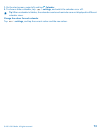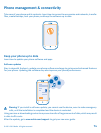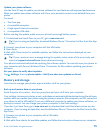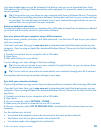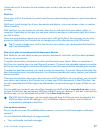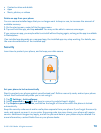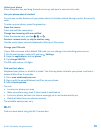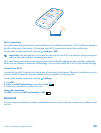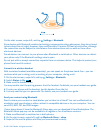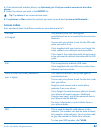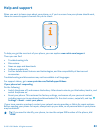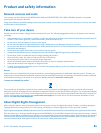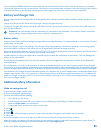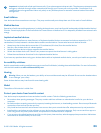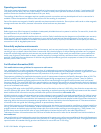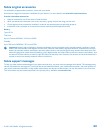
If your device has WMDRM-protected content, both the licences and the content are lost if the device memory is formatted.
You may also lose the licences and the content if the files on your device become corrupted. Losing the licences or the content
may limit your ability to use the same content on your device again. For more info, contact your service provider.
Battery and charger info
Use your device only with an original BP-3L rechargeable battery. Nokia may make additional battery models available for this
device.
Charge your device with AC-20N or AC-16N charger. Charger plug type may vary.
Third-party chargers that comply with the IEC/EN 62684 standard, and that can connect to your device micro USB connector,
may also be compatible.
Important: Talk and standby times are estimates only. Actual times are affected by, for example, network conditions,
device settings, features being used, battery condition, and temperature.
Battery safety
Always switch the device off and unplug the charger before removing the battery. To unplug a charger or an accessory, hold and
pull the plug, not the cord.
When your charger is not in use, unplug it. Do not leave a fully charged battery connected to a charger, as overcharging may
shorten the battery’s lifetime. If left unused, a fully charged battery will lose its charge over time.
Always keep the battery between 15°C and 25°C (59°F and 77°F). Extreme temperatures reduce the capacity and lifetime of the
battery. A device with a hot or cold battery may not work temporarily.
Accidental short-circuiting can happen when a metallic object touches the metal strips on the battery. This may damage the
battery or the other object.
Do not dispose of batteries in a fire as they may explode. Obey local regulations. Recycle when possible. Do not dispose as
household waste.
Do not dismantle, cut, crush, bend, puncture, or otherwise damage the battery in any way. If a battery leaks, do not let liquid
touch skin or eyes. If this happens, immediately flush the affected areas with water, or seek medical help. Do not modify, attempt
to insert foreign objects into the battery, or immerse or expose it to water or other liquids. Batteries may explode if damaged.
Use the battery and charger for their intended purposes only. Improper use, or use of unapproved or incompatible batteries or
chargers may present a risk of fire, explosion, or other hazard, and may invalidate any approval or warranty. If you believe the
battery or charger is damaged, take it to a service centre before continuing to use it. Never use a damaged battery or charger.
Only use the charger indoors.
Additional safety information
Make an emergency call
1. Make sure the phone is switched on.
2. Check for adequate signal strength.
You may also need to do the following:
• Put a SIM card in the device.
• Switch the call restrictions off in your phone, such as call barring, fixed dialling, or closed user group.
•Make sure flight mode is not switched on.
• If the phone screen and keys are locked, unlock them.
3. Press
.
4. Select
.
5. Select
.
6. Type in the official emergency number for your present location. Emergency call numbers vary by location.
7. Select call.
8. Give the necessary info as accurately as possible. Do not end the call until given permission to do so.
When you switch your phone on for the first time, you are asked to create your Microsoft account and set up your phone. To
make an emergency call during the account and phone setup, tap emergency call.
© 2012–2013 Nokia. All rights reserved.
85



